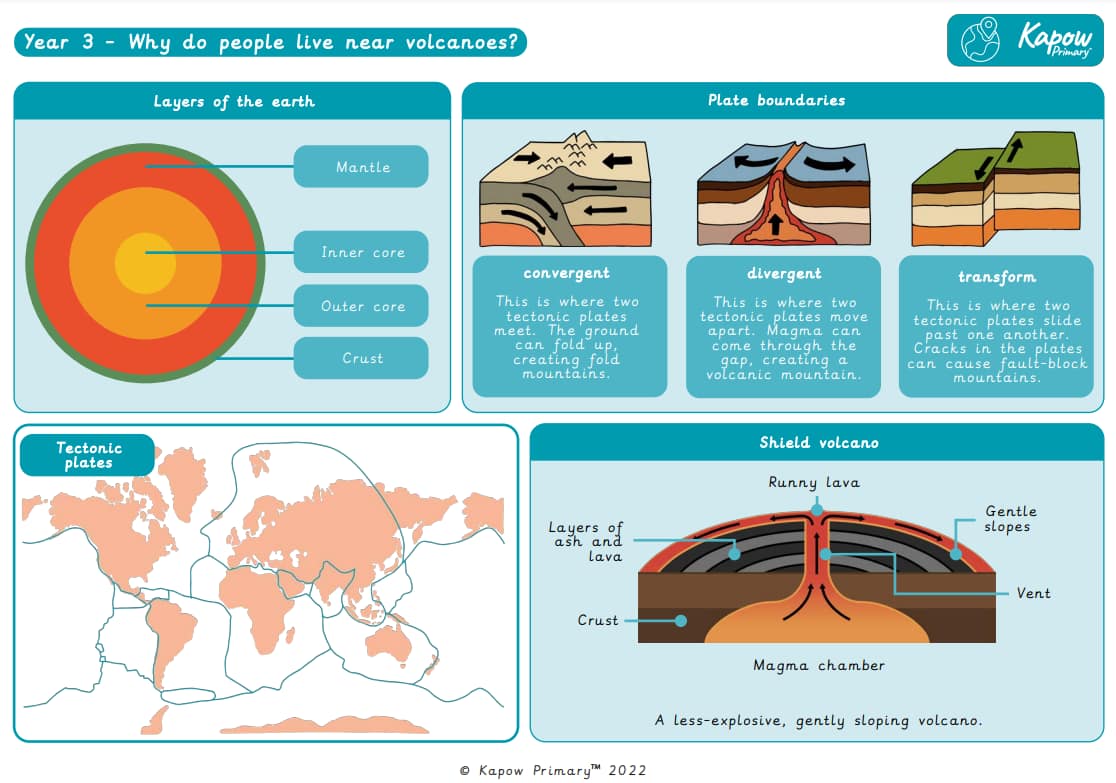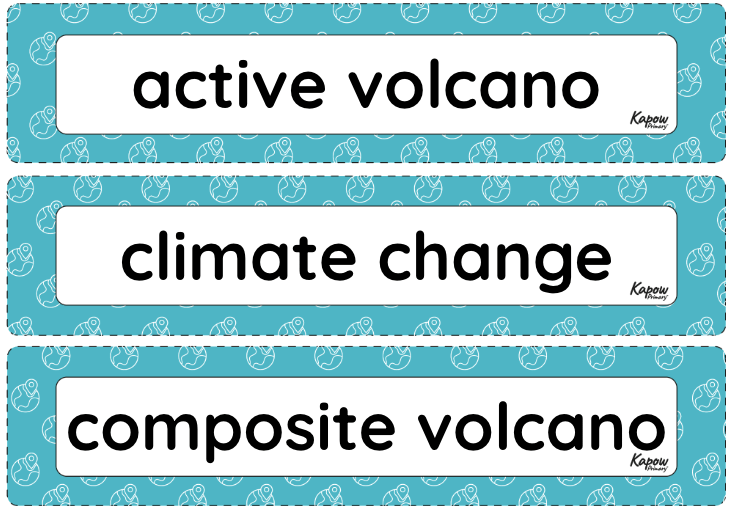Y3/4 (A): Why do people live near volcanoes?
Based on the National curriculum for Geography in KS2, use this unit hub to inform your medium-term plan.
The Curriculum and Assessment Review final report has been released. We’re reviewing the recommendations and planning for future updates. Learn more
Unit outcomes
Pupils who are secure will be able to:
- Name all four layers of the Earth in the correct order, stating one fact about each layer.
- Explain one or more ways a mountain can be formed.
- Give a correct example of a mountain range and its continent.
- Describe a tectonic plate and know that mountains occur along plate boundaries.
- Correctly label the features of shield and composite volcanoes and explain how they form.
- Name three ways in which volcanoes can be classified.
- Describe how volcanoes form at tectonic plate boundaries.
- Explain a mix of negative and positive consequences of living near a volcano.
- State whether they would or would not want to live near a volcano.
- State that an earthquake is caused when two plate boundaries move and shake the ground.
- Explain that earthquakes happen along plate boundaries.
- List some negative effects that an earthquake can have on a community.
- Observe, digitally record and map different rocks using a symbol on a map.
- Identify rock types and their origins based on collected data.
Lesson 6 involves fieldwork on the school grounds. It is important to risk-assess the proposed route taking into account any relevant school risk assessment policies and procedures. Refer to the Before the lesson section in Lesson 6 to prepare for this lesson. Please be aware this lesson may take longer than 1 hour.
Lessons 3 and 6 require a device (one per pair).
Suggested prior learning
Y1/2 (B): What is it like to live in Shanghai?
Get startedLessons
Y3/4 (A): Lesson 1: How is the Earth constructed?
- To name and describe the layers of the Earth.
Y3/4 (A): Lesson 2: Where are mountains found?
- To explain how and where mountains are formed.
Y3/4 (A): Lesson 3: Why and where do we get volcanoes?
- To explain why volcanoes happen and where they occur.
Y3/4 (A): Lesson 4: What are the effects of a volcanic eruption?
- To recognise the negative and positive effects of living near a volcano.
Y3/4 (A): Lesson 5: What are earthquakes and where do we get them?
- To explain what earthquakes are and where they occur.
Y3/4 (A): Lesson 6: Where have the rocks around school come from?
- To observe and record the location of rocks around the school grounds and discuss findings.
Related content
Unit resources

Knowledge organiser: Geography – Y3 Why do people live near volcanoes?
Aimed at pupils, three pages providing key facts and definitions from the unit "Why do people live near volcanoes?".

Vocabulary display: Why do people live near volcanoes?
A display version of the vocabulary from the unit 'Why do people live near volcanoes?'
Cross-curricular opportunities
Science: States of matter, rocks, living things and their habitats, forces
English: Spoken language, reading
Art and design
Computing
Physical education

